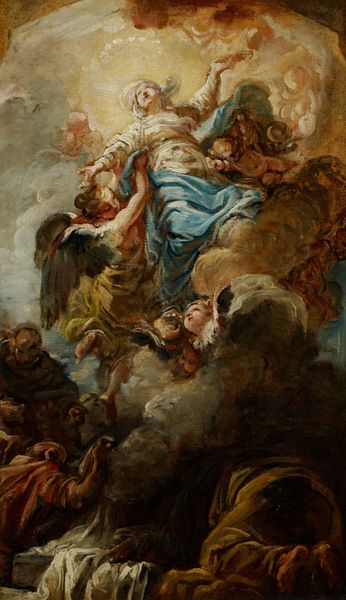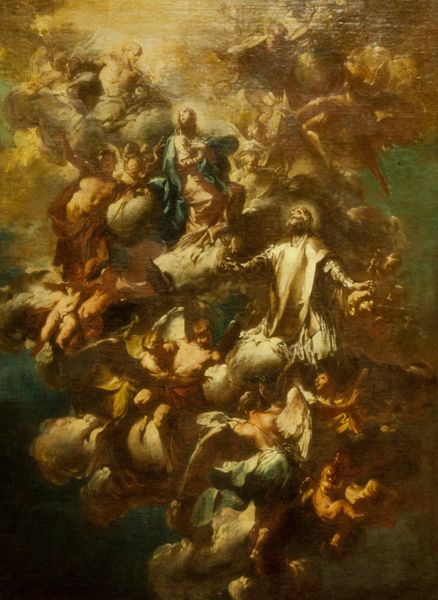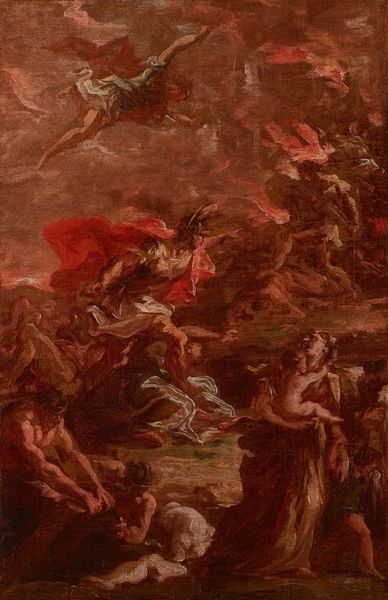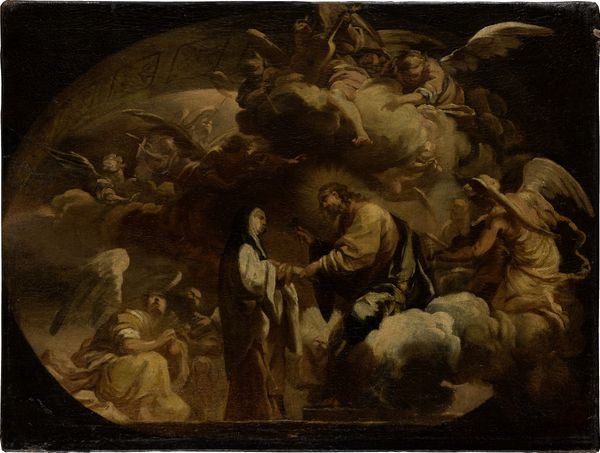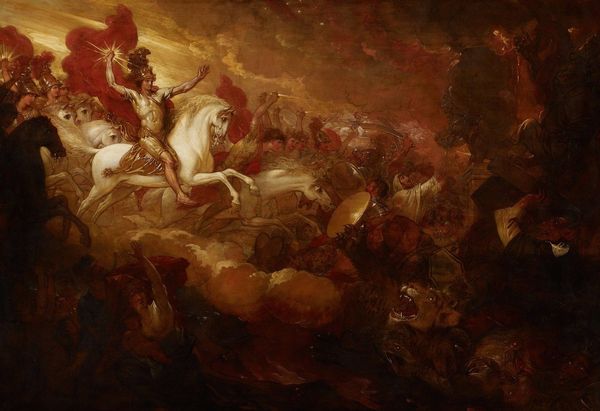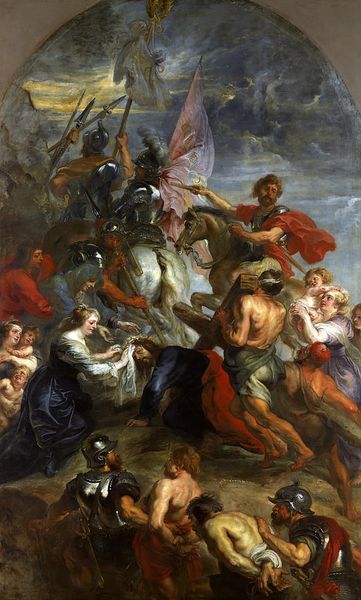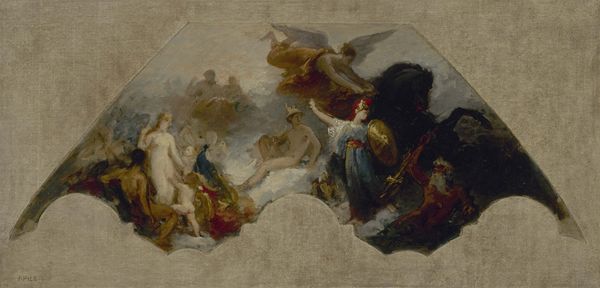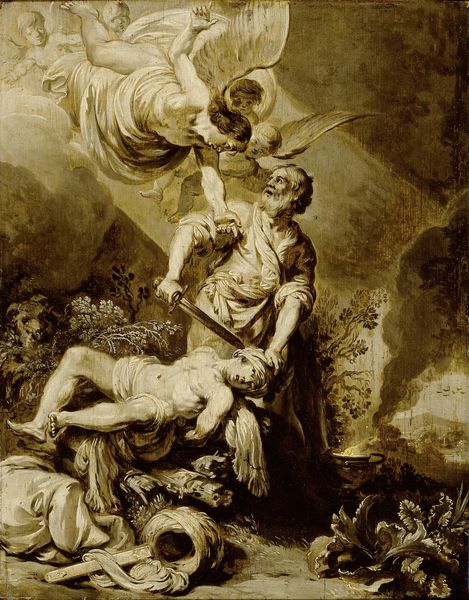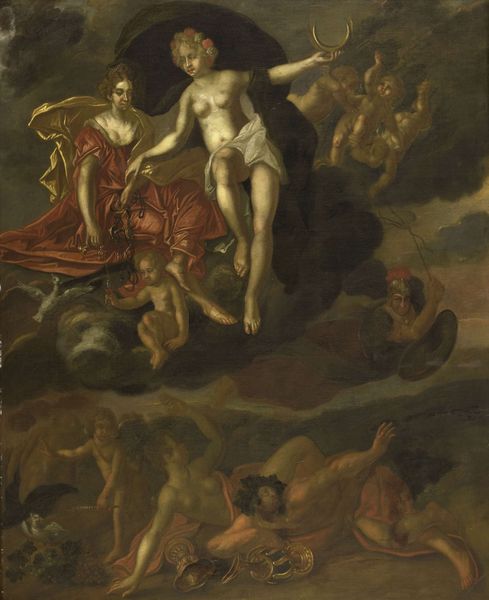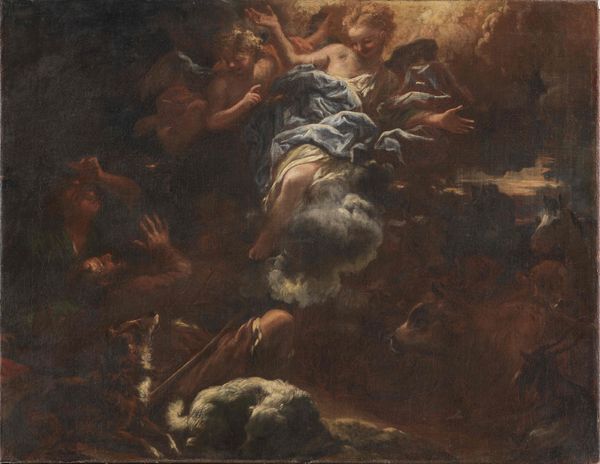
Allegory on the Dutch Raid on the Medway (1667), with a Portrait of Cornelis de Witt 1668
0:00
0:00
painting, oil-paint
#
portrait
#
allegory
#
narrative-art
#
baroque
#
painting
#
oil-paint
#
figuration
#
oil painting
#
genre-painting
#
history-painting
Dimensions: height 104 cm, width 153.5 cm, depth 9.5 cm
Copyright: Rijks Museum: Open Domain
Curator: Oh, my, this is quite a baroque fever dream, isn't it? My first impression is that I've walked into the middle of a particularly dramatic history lesson, staged by cherubs. Editor: You're spot on with "dramatic." This is Cornelis Bisschop's 1668 painting, "Allegory on the Dutch Raid on the Medway (1667), with a Portrait of Cornelis de Witt." It commemorates a pivotal moment in Dutch history. Curator: Allegory, definitely. I mean, look at the swirling chaos of it all! You've got triumphant swans, a melancholic portrait hovering in the air, and is that... Britannia weeping? It’s a glorious jumble of symbols. It feels…overwhelming, like too many ideas struggling for space on the canvas. Editor: Exactly. Bisschop is using symbolism to convey the Dutch victory over the English fleet. Britannia’s defeat is represented by her broken spear and the lion in distress; de Witt is shown heroically. Note how Bisschop combines historical record with propaganda. This was very much about shaping public perception. Curator: So, not just documenting history, but massaging it a little, eh? The little details fascinate me - the figure of Fame trumpeting the victory, while below, this almost unnervingly focused woman writes it all down. Is that supposed to be Clio, the muse of history? The entire image almost makes a mockery of our attempts to neatly package the past, wouldn't you say? It hints at all those competing narratives clamoring to be told. Editor: That's insightful. The layered composition forces us to consider how history is written and remembered, whose voices are amplified, and whose are silenced. This piece invites us to engage with these themes through vivid imagery, even today. The dark sea, that ominous, cloudy sky. This really underlines that art serves powerful, ideological ends. Curator: I love that. It leaves me wondering, who controls the story? And whose swans get to swim serenely into history books? Makes you want to question every single narrative that’s been force-fed to us, doesn't it? Editor: Precisely. It's a work that insists on dialogue. And challenges us to be critical readers of the past. Thank you, Cornelis Bisschop.
Comments
No comments
Be the first to comment and join the conversation on the ultimate creative platform.
